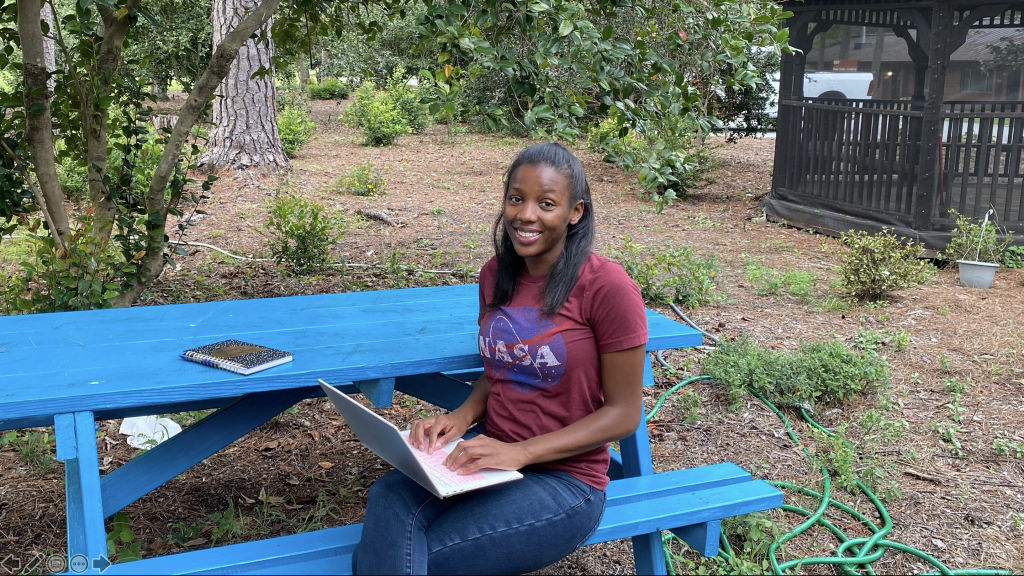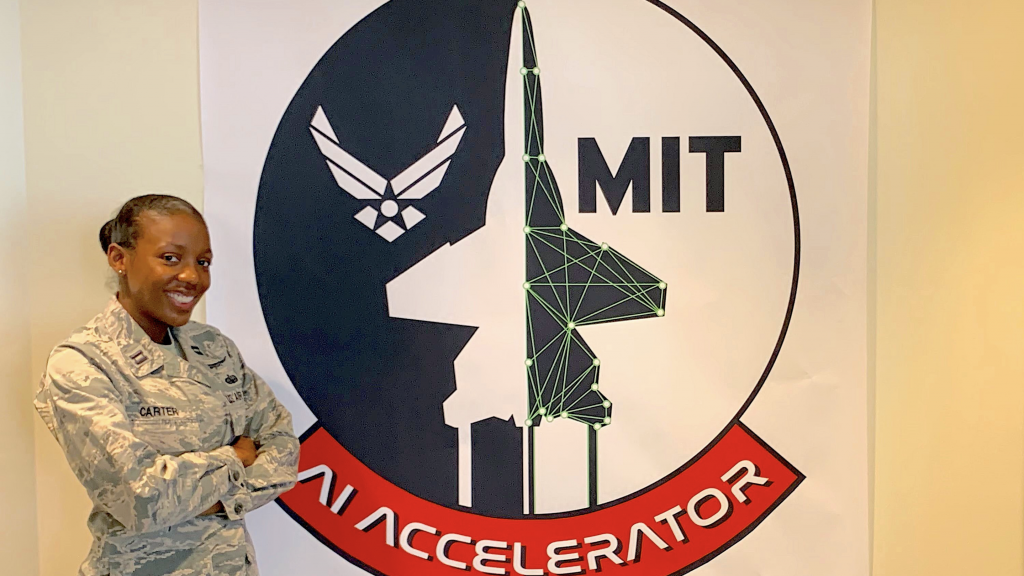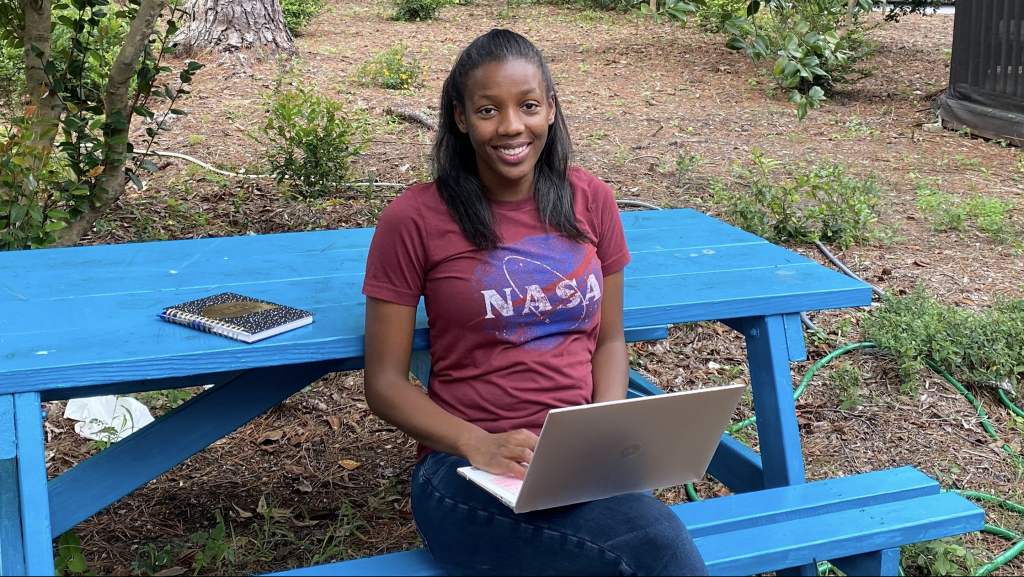Working AI: Scheduling Pilots With Ronisha Carter

Title: Artificial Intelligence Integration Flight Commander, U.S. Air Force
Location: Cambridge, Massachusetts
Age: 35
Education: B.S. Computer Science, Hawaii Pacific University, and M.S. Computer Engineering, Florida International University
Favorite ML area: Natural Language Processing
Favorite ML researchers: Jeremy Howard, Michael I. Jordan
Public service runs deep in Ronisha Carter’s family. Her mother was a Navy medical technician, and her father worked for the Air Force in information management. The two parents ignited a sense of curiosity and love of learning that led Ronisha and her siblings to explore technology. Her sister was the first in the family to earn a Bachelor’s degree, and her brothers became software developers. Ronisha joined the Air Force and went on to earn a Bachelor’s in computer science and a Master’s in computer engineering before charting a flight path in AI.
How did you get into AI?
As a young captain in the Air Force, I was selected for a fellowship at VMware. For over a year, I explored the various applications and technologies developing under R&D. When I found out about artificial intelligence and machine learning projects that involved working on revolutionary solutions for real problems, I knew I wanted in.
The R&D team at VMware consisted of some of the most intelligent people I’ve ever had the pleasure of knowing. They introduced me to resources such as Learn Python the Hard Way, online courses, and important research papers in AI and NLP to get me up to speed. As my knowledge grew, so did my desire to work in this space.
What are you working on?
Last year, I was one of 11 active-duty Airmen hand-picked to be part of a partnership between the U.S. Air Force and MIT Artificial Intelligence Accelerator. The partnership develops AI solutions for national defense. As the Air Force Lead on the project, I direct departmental specifics, operational research needs, and technology integration efforts into Air Force platforms.
Currently, I’m working on AI-assisted optimization of training schedules alongside a team of MIT principal investigators, grad students, software developers, human-computer interaction designers, and Tron, an Air Force software development team.
Air Force pilots need to complete extensive hours of training to qualify to fly. It’s time-consuming to develop a schedule that meets everyone’s availability, checks off their training, and allows for rest. We use AI and automation to reduce scheduling time and increase efficiency for in-flight and training schedules, qualification requirements, pilot availability, and other interdependencies. Our project aims to ease the lives of everyday Airmen, but it also has the potential to solve scheduling problems in civilian sectors such as commercial aviation, logistics, and hospital scheduling.

Tell us about the modelling approaches or algorithms you’re using.
Our current approach is a simulated annealing linear program hybrid algorithm. It constructs a function that penalizes event scheduling outside of provided windows. It disincentivizes overlapping events and shuffling and evaluating event start times until the simulated annealing algorithm terminates. Then a linear program takes the event schedule and solves the crew assignment problem to fit the proposed schedule.
We’re trying multiple solvers, including OR Tools within Python and Gurobi within Julia. We’re also exploring a mixed-integer programming formulation for the crew scheduling portion. The objective function rewards training requirements that are completed.
As part of this assignment, I hope to learn from some of the greatest minds in AI. In the future, I would like to continue to create AI/ML technology that can impact Airmen operations day to day.
Who inspired you when you were growing up? What would you consider some of your milestones?
I’ve known incredible, inspiring leaders like Air Force Lt. Col. (ret.) Adisa Hinton. A mentor at nearly every turn in my career as an Airman, he would always tell me to “Get it done!” and push me to pursue my dreams. Col. (ret.) Joyce Jenkins-Harding, the first female African American senior officer I ever met, showed me the possibilities of what I could achieve. These leaders, as well as my family, paved the way for me.
Being part of the first generation of my family to complete a Bachelor’s degree and also the first to complete an advanced degree are important personal milestones. Crossing over from the enlisted ranks to serve as an officer in the United States Air Force and getting selected for the highly competitive fellowship with VMWare were incredible professional milestones.
Many people worry about the lethal potential of AI in a military context. You’re uniquely qualified to help machine learning engineers understand the nuances of the issue. Could you share your perspective?
The military has put a lot of consideration into the implications of AI. In February, the Department of Defense adopted its Ethical Principles for AI based on recommendations provided by the Defense Innovation Board. This mandates that all DOD AI capabilities must be responsible, equitable, traceable, reliable, and governable and meet the same legal, ethical, and policy standards across the department.
When it comes to turning principles into practice, the DOD has a long and established history in research and development, test and evaluation. Subsequently, the department is beholden to both these processes and regulations throughout the product lifetime. There is no doubt that things don’t always end up right. But when they don’t, we are held accountable and we endeavor to do better. There is an open dialogue in the Air Force, for which I am grateful.
In the end, AI is a tool in the toolbox. Think of it as a hammer. You can use it to hang pictures or take out nails, but you could also use it to damage something. It’s what we do with AI, how we use it to help others, that matters most.

What are your thoughts about diversity in AI? What should AI companies and leaders be doing?
We have to do a better job in the early stages. We can do this through the socialization of opportunities, community outreach, and roadmaps to education and careers in AI provided to inner city kids, young adults, and parents.
Children and parents need better outreach from companies and leaders to understand the requirements needed to apply to educational programs in computer science, data science, and AI (such as straight A’s, community service, summer hire experience, and so on). They need resources to help achieve those requirements such as scholarship opportunities, career showcase events, and school counselors who understand the value of these studies. They need mentors to convey the how-to and offer guidance in building a career.
These steps need to be provided early to underrepresented groups, so these groups have a roadmap to success, from education to entry-level to mid-level jobs.
The Air Force’s enlisted to officer program is a great example of this concept. Although the bar is high, Airmen are provided with all the required steps to qualify and apply.
I urge leaders, schools, and companies to develop and provide a clear and concise path of entry into their organization, regardless of how high the bar. Having a detailed roadmap opens career paths to people who would not otherwise even know they were options. I believe this will help remove barriers of inclusion and increase diversity in AI.
What advice do you have for someone trying to break into AI?
Be curious! If you don’t know what something means, then look it up. If you are not sure how something works, then watch a video. Never be satisfied that something works just because it does.
Never be afraid to just try things out. Write code, re-write that code, run multiple models. You’ll be surprised by what you learn from just attempting things. Choose where you want to be, map out every possible way to get there, and give yourself time. Life is a journey not a race.
You can find Ronisha Carter on LinkedIn.